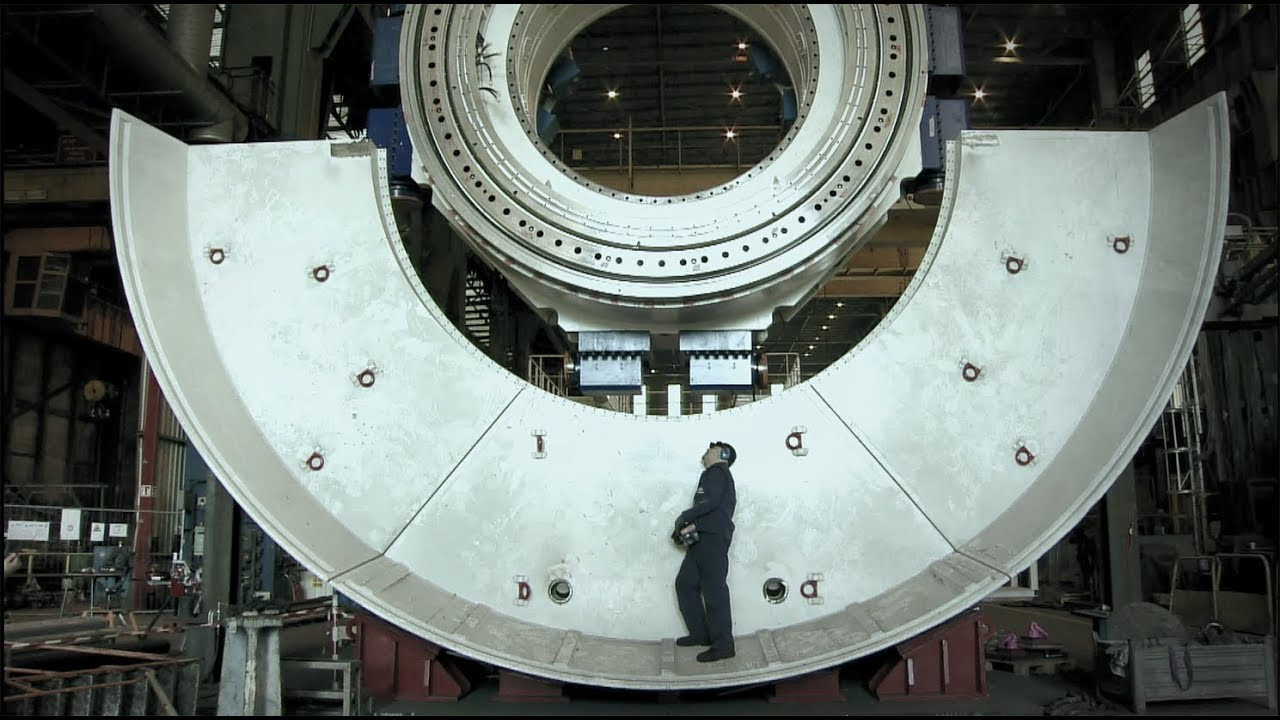Heavy cargo logistics for semmering base tunnel
March 30, 2018 | Markus Lackner
At a length of some 13 kilometres, the Fröschnitzgraben section will become the longest part of the Semmering Base Tunnel. The access tunnel leading to the construction site in the cavern descends some 400 metres vertically and has a diameter of about ten metres. It is used to advance the tunnel in the direction of Mürzzuschlag by means of blasting. Heading in the Gloggnitz direction is taken care of by two tunnel boring machines.
Dual heavy haulage
Some 100 transports weighing in at a total cargo weight of approximately 2,500 tons were required to haul the first of two tunnel boring machines from Le Creusot (F) to the construction site in Steinhaus am Semmering (A). “Following a road section leading to the Straßbourg port, our subsidiary Haeger & Schmidt took over the cargo,” reports Roland Füreder from Felbermayr’s Heavy Haulage Department. After that and using a barge, the components were transported to the heavy cargo terminal in Linz, where they were stored temporarily, via the Rhine-Main-Danube Canal. This was followed by further road transport to the construction site at the Semmering pass which were concluded in February. This was mainly done using modular heavy load trailers with so called THP axles. The cutter head, at 115 tons the heaviest part, was transported on 14 axle modules.
Bringing the parts underground
400 metres of elevation separate the tunnel boring machines’ origin in Le Creusot and their destination at Fröschnitzgraben 828 metres above sea level. The Wimmer Maschinentransporte team had to overcome the same challenge once more. Not horizontally, but vertically. And that is what made the whole thing so difficult. Wimmer Maschinentransporte’s Managing Director Holger Stegmann: “Although there was a shaft lift, it was only approved for loads of up to 90 tons. The heaviest part we had to bring into the tunnel weighed more than 100 tons, however. The solution was to remove all unnecessary parts of the lift. In the end, there was not much left of the shaft lift apart from its base frame,” Stegmann illustrates the result.
The transport of individual parts from the storage site to the shaft lift was performed using two so-called Sefiros (self-propelled industrial rollers). At the storage site, the components were transshipped using a mobile crane. “For the hydraulic shifting of the components weighing in at many tons into the lift we built a twelve-metre-long skidway,” Stegmann explains. Following their “descent”, the parts were once again taken out of the lift using another skidway. To negotiate the last few metres to the tunnel boring machine’s installation site, the parts were transshipped by means of a Sefiro. Thus, the prerequisites for the tunnel boring machine’s final assembly were established in late February.
Commissioning of the Semmering Base Tunnel is scheduled for 2026. The 27-kilometre railway tunnel is supposed to take the load off the historic Semmering mountain route as well as significantly reduce travel times and thus allow for a better connection to Southern Austria. Internationally, this route will strengthen the European north-south-axis when it comes to passenger and goods transport.


![© Felbermayr/Lackner Slide [Translate to Englisch:]](/fileadmin/_processed_/0/b/csm_D3CW9138_c7cc0fd1b9.jpg)
![© Felbermayr/Lackner Slide [Translate to Englisch:]](/fileadmin/_processed_/7/2/csm_D3CW9079_7c4c1d1056.jpg)
![© Felbermayr/Lackner Slide [Translate to Englisch:]](/fileadmin/_processed_/4/5/csm_D3CW9106_c529e498c9.jpg)
![© Felbermayr/Lackner Slide [Translate to Englisch:]](/fileadmin/_processed_/8/4/csm_D3CW9124_51a29e5ec6.jpg)
![© Felbermayr/Lackner Slide [Translate to Englisch:]](/fileadmin/_processed_/8/7/csm_D3CW9146_1513e46b84.jpg)
![© Wimmer Maschinentransporte Slide [Translate to Englisch:]](/fileadmin/_processed_/8/f/csm_IMG_0236_d80bba7113.jpg)
![© Wimmer Maschinentransporte Slide [Translate to Englisch:]](/fileadmin/_processed_/a/0/csm_IMG_0240_59b71b579a.jpg)
![© Wimmer Maschinentransporte Slide [Translate to Englisch:]](/fileadmin/_processed_/8/9/csm_IMG_0304_868c802dd4.jpg)
![© Wimmer Maschinentransporte Slide [Translate to Englisch:]](/fileadmin/_processed_/d/0/csm_IMG_0318_436b0fe016.jpg)
![© Wimmer Maschinentransporte Slide [Translate to Englisch:]](/fileadmin/_processed_/a/7/csm_IMG_0331_6f5805d4cd.jpg)
![© Wimmer Maschinentransporte Slide [Translate to Englisch:]](/fileadmin/_processed_/4/5/csm_IMG_0359_a809be2376.jpg)
![© Wimmer Maschinentransporte Slide [Translate to Englisch:]](/fileadmin/_processed_/6/4/csm_IMG_0382_72231ee89d.jpg)
